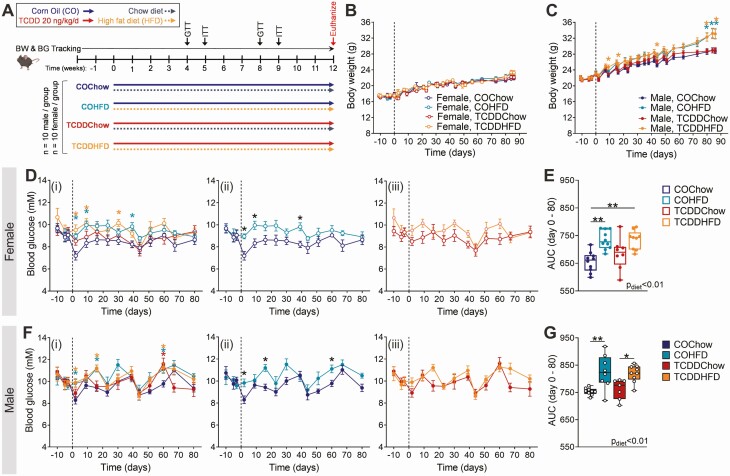Figure 1.
Low-dose TCDD exposure does not impact body weight or fasting blood glucose levels in mice. (A) Male and female mice were exposed to corn oil or 20 ng/kg/d TCDD 2×/week for 12 weeks, and simultaneously fed either a chow diet or 45% HFD. Body weight and blood glucose was tracked throughout the 12-week study. BG, blood glucose; BW, body weight; GTT, glucose tolerance test; ITT, insulin tolerance test. (B-C) Body weight and (D-G) blood glucose were measured weekly following a 4-hour morning fast in (B, D, E) females and (C, F, G) males (n = 7-10 per group). (D, F) Blood glucose data are presented as (i) all groups compared to COChow, (ii) COHFD compared to COChow, and (iii) TCDDHFD compared to TCDDChow. Data are presented as mean ± SEM in line graphs or median with min/max values in box and whisker plots. Individual data points on box and whisker plots represent biological replicates (different mice). *P < 0.05, **P < 0.01, colored stars are versus COChow. The following statistical tests were used: (B, C, D, F) two-way REML-ANOVA with Tukey’s multiple comparisons test; (E, G) two-way ANOVA with Tukey’s multiple comparisons test.

